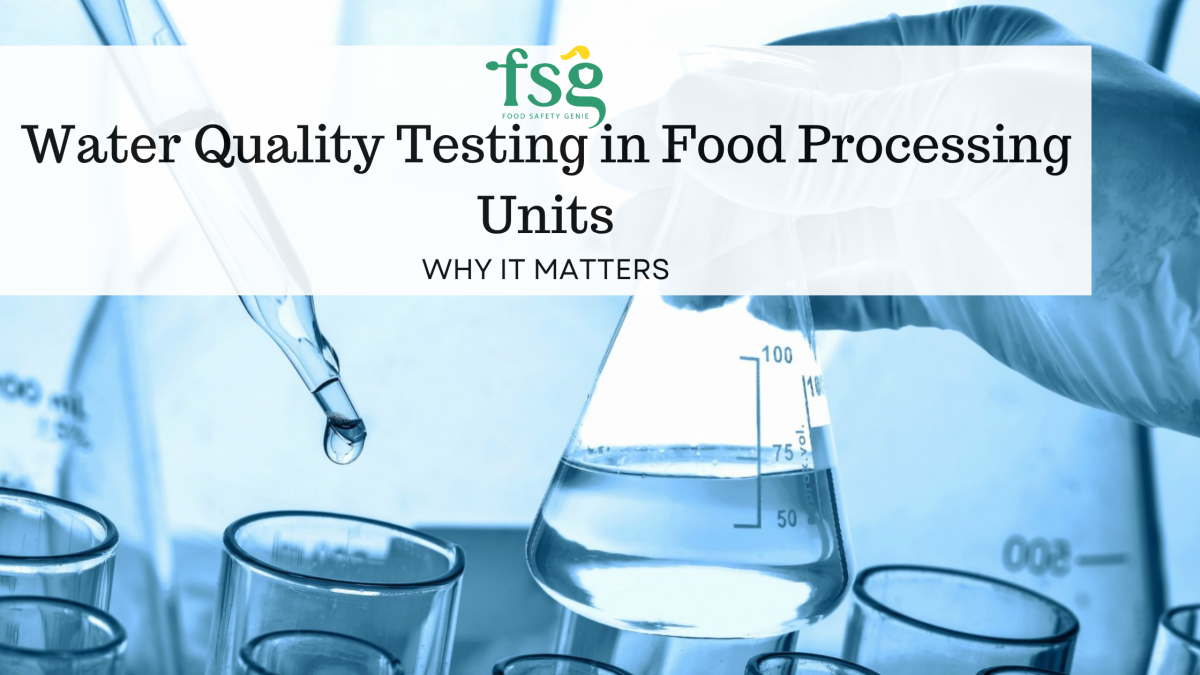In the food processing industry, water is more than just a utility—it’s a critical ingredient, a cleaning agent, a processing aid, and sometimes even a final rinse. Given its multifaceted role, the quality of water used in food production directly affects the safety, taste, and shelf-life of food products. Ensuring water quality through rigorous testing isn’t just a regulatory requirement—it’s a cornerstone of food safety and brand integrity.
Image reference: www.intownplumbingtx.com
The Role of Water in Food Processing
Water is used extensively in food manufacturing operations, including:
- Ingredient water: Used directly in product formulations (e.g., beverages, soups).
- Cleaning and sanitization: For equipment, surfaces, and facilities.
- Processing aid: In cooking, blanching, cooling, and transporting food items.
- Packaging: In the production of ice or steam used in packaging.
Because water comes into contact with both the product and the production environment, its quality must meet strict hygiene and safety standards to prevent contamination.
Why Water Quality Testing is Critical
1. Ensuring Food Safety
Contaminated water can introduce harmful microorganisms like E. coli, Salmonella, and Listeria, which can lead to foodborne illnesses and product recalls. Regular microbiological testing ensures water is free from pathogens and meets acceptable safety levels.
FSSAI Microbiological Limits:
- Total Coliforms: 0 / 100 ml
- E. coli / Thermotolerant Coliforms: 0 / 100 ml
- Pseudomonas, Yeasts, Molds: Must not be detectable in water used in processing or cleaning.
2. Compliance with Regulations
National and international food safety standards, including the Food Safety and Standards Authority of India (FSSAI), mandate that water used in food processing must comply with IS 10500:2012 quality standards.
Key FSSAI Limits (as per IS 10500:2012):
| Parameter | Acceptable Limit |
| pH | 6.5 – 8.5 |
| Turbidity | ≤ 1 NTU |
| Total Dissolved Solids (TDS) | ≤ 500 mg/L (up to 2000 mg/L permissible in absence of alternatives) |
| Total Hardness (as CaCO₃) | ≤ 200 mg/L (max 600 mg/L) |
| Iron | ≤ 0.3 mg/L |
| Fluoride | ≤ 1.0 mg/L (max 1.5 mg/L) |
| Lead (Pb) | ≤ 0.01 mg/L |
| Arsenic (As) | ≤ 0.01 mg/L |
| Nitrate | ≤ 45 mg/L |
| Pesticide Residues | Not detectable |
Failing to meet these standards can result in FSSAI license suspension, penalties, or product bans.
Image reference : www.worldwaterreserve.com
3. Protecting Brand Reputation
A single instance of contaminated product due to poor water quality can damage consumer trust and a company’s reputation. Proactive testing helps maintain consistent product quality and protects the brand from potential fallout.
4. Preventing Equipment Damage
Water with high hardness or corrosive elements can damage processing equipment, leading to costly maintenance and downtime. For instance:
FSSAI / IS 10500 Acceptable Limit for Hardness:
- ≤ 200 mg/L as CaCO₃ (acceptable)
- Up to 600 mg/L permissible in absence of alternative source
Excess hardness leads to scaling, reduces heat transfer efficiency, and shortens equipment lifespan.
5. Supporting Sustainable Practices
Understanding water quality helps companies optimize their water treatment processes and reuse strategies, aligning with sustainability goals and reducing operational costs.
Key Water Testing Parameters in Food Processing
Food units must regularly test water for:
Microbiological Quality
- Total Coliforms: 0/100 ml
- E. coli: 0/100 ml
- Pathogens (e.g., Salmonella, Listeria): Should not be present
Image reference: www.universe84a.com
Chemical & Physical Properties
- pH: 6.5 – 8.5
- Turbidity: ≤ 1 NTU
- TDS: ≤ 500 mg/L (acceptable)
- Total Hardness: ≤ 200 mg/L
- Chloride: ≤ 250 mg/L
- Nitrate: ≤ 45 mg/L
- Iron: ≤ 0.3 mg/L
- Fluoride: ≤ 1.0 mg/L
- Lead: ≤ 0.01 mg/L
- Arsenic: ≤ 0.01 mg/L
- Pesticide Residues: Not detectable
Testing should be conducted by FSSAI-recognized or NABL-accredited labs.
Best Practices for Water Quality Management
- Source Protection: Monitor and manage the quality of incoming water.
- Regular Testing: Establish a frequency-based testing plan:
- Microbiological: Weekly or Monthly
- Chemical: Quarterly
- Heavy Metals & Pesticides: Annually or when contamination is suspected
- Filtration & Treatment: Use suitable systems like RO, UV, or chlorination.
- Documentation & Traceability: Maintain test records for audits and compliance.
- Staff Training: Train employees in hygiene, water handling, and SOPs.
Conclusion
Water quality testing in food processing units isn’t just a technical necessity—it’s a fundamental responsibility. By complying with FSSAI and IS 10500 standards, food businesses can ensure product safety, gain regulatory confidence, and protect public health. A robust water testing strategy not only reduces the risk of contamination but also reinforces trust among consumers and regulators alike.

